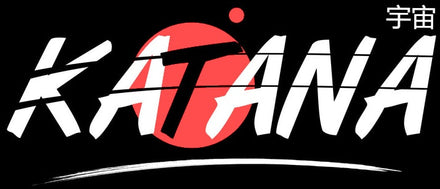Kenjutsu, an esteemed Japanese art focused on the sword, occupies a prominent position among the four central martial arts (bujutsu) of ancient Japan. It encompasses various sword-related skills, including the technique of the sword, known as battōjutsu (抜刀術). The term "kenjutsu" combines "ken" (剣), meaning sword, and "jutsu" (術), meaning art or technique. In the present day, numerous martial arts schools worldwide impart the **principles of kenjutsu**. But how did it all begin?
The Essence of Kenjutsu

Kenjutsu encompasses the entire art of Japanese swordsmanship, originating from the time of the samurai and feudal Japan. The focus is on mastering the technique and method of swordsmanship. Samurai were practitioners of "combat techniques," essentially Bujutsu. Initially, wooden swords (Bokuto/Bokken) or occasionally real swords (Katana) were used in practice. Later, in the 19th century, bamboo swords (Shinai) were introduced to enable full-contact sparring. Kenjutsu experienced a temporary decline in popularity during the mid-19th century due to the dissolution of the samurai class and other major changes in **Japan** at the time. However, the art regained momentum in the late 19th century when adopted by the Japanese military and police.
Traditional classical Kenjutsu remains relatively rare outside of Japan and is still considered a **secret training method** for the "art of war." On the other hand, **modern Kenjutsu** enjoys popularity among enthusiasts of traditional Japanese martial arts and is predominantly practiced using a Bokken. It is often incorporated into other martial arts to integrate weapon training into hand-to-hand combat.
The Core Philosophy of Kenjutsu

The sword has always held profound significance in **Japanese culture** and among Japan's warriors. It is, after all, one of the three sacred treasures (Mikusa no Kamudakara) of Japan, representing valor alongside the mirror for wisdom and the jewel for compassion. The sword played a limited role in the warrior's early career on battlefields from the 900s to the 1300s, as skills in horse riding and archery were more prominent. However, from the 1500s onwards, the sword gained popularity, becoming prevalent in fortified cities, villages, and duels. Its ease of carrying allowed for constant development, as warriors kept their swords at their side, even indoors.
Kenjutsu primarily involves one-on-one combat, offering various techniques for countering different weapons like yari, naginata, jō, and more. From lances to arrows, there exist **kenjutsu techniques** to aid the sword-wielder in any situation.
Practicing the Art of Kenjutsu

Kenjutsu boasts a wide variety of schools, each with its unique **techniques and styles**. Commonly taught techniques encompass cuts, thrusts, punches, parries, feints, all combined with footwork. Practitioners learn these techniques through Kata, a series of movements. The classes emphasize practical applications based on one's environment, familiarizing students with their weapons and potential encounters, along with proper body mechanics. While confrontations are less likely in modern times, this training prepares individuals for any eventuality.
A significant portion of partner training is non-contact, allowing individuals to practice attacking, countering, and honing techniques without physical contact.















